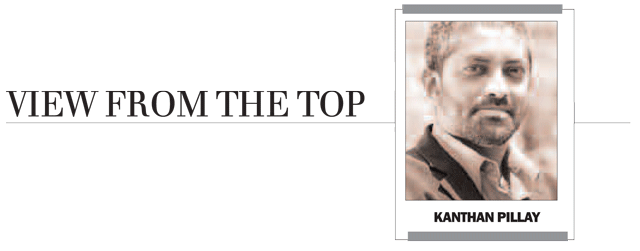
Do you know that by the simple act of reading these words, you are flagging yourself as a prime candidate for a range of medical disorders including cardiovascular disease and diabetes?
If you are a typical Post reader, your ancestors and mine crossed the Indian Ocean sometime in the late 19th century to arrive in Durban. As a whole, our ancestors were poor and predominantly labourers, but through a combination of hard work and significant investment in the education of their children, they were able to raise the standards of living of their descendants in a way that would not have been possible had they remained in India.
But while life was hard for our impoverished ancestors in India, in many ways they were healthier than we are. The simple tasks of physical labour meant that exercise was part of their daily routine. And their food was a coarse, fibre-rich diet with clarified butter and coconut, lots of yoghurt, lots of lime and tamarind, and lots of highly nutritious and medicinal vegetables such as pippali and moringa.
Now contrast that with what most of our fellow readers would swear is typical Indian food – the ubiquitous Durban mutton-and-potatoes curry served with long grain rice.
We find sunflower oil instead of ghee (sunflowers came from America), American long-grain rice instead of Indian white rice, chilli instead of pippali (chilli peppers came from America), tomato instead of coconut (tomatoes came from America), and potatoes (which also came from America). Oh, and the mutton eaten by our ancestors in India would probably have been goat and not sheep.
Don’t blame the 1860 settlers and those who followed them – the fact is that ingredients which were everywhere in the ancestral homeland were simply not available in southern Africa. Our ancestors improvised as best they could with locally-available ingredients. At the same time, we were growing more prosperous. The result is that we spent less time on physical labour and more time on intellectual labour. And we ate badly.
The result is that today, Indians in South Africa have a higher prevalence of diabetes, coronary artery disease (CAD) (particularly premature CAD) and high cholesterol compared to the native populations of India. From the fourth generation onward, we also have central obesity and balding occurring as early as 25 to 30 years of age. This is also the case for Indian expats in the UK, USA, Canada, Fiji, Mauritius, and Malaysia.
Today, pharmaceutical companies are making lots of money from this phenomenon. Many of you reading this are taking some form of medication designed to counteract these diseases. This might be cholesterol-lowering medication, blood-pressure tablets, insulin for diabetes, aspirin to thin your blood, niacin to raise levels of “good” cholesterol. You might also be using eye drops to stave off glaucoma, or minoxidil to regrow your hair, or sildenafil citrate for impotence. It’s a good thing that we are better off than before to be able to afford more expensive drugs.
Surgical procedures are also better than just a couple of decades ago. My father died in 1997 at age 67 of congestive cardiac failure brought on by smoking. Today, doctors would have done a quick angioplasty with a stent or two and kept him alive for many more years.
But drugs and surgery are never a good long-term solution. Health care costs are increasing at a faster rate than inflation every year. If you are in your 30s and taking chronic medication, chances are that the drugs you are taking today will be unaffordable by the time you are ready to retire.
Why not change your lifestyle instead? Go for a 15 minute walk every day, stop taking sugar in your tea, get your body mass index to between 20 and 25, eat more greens with olive oil and lemon juice and garlic, stop smoking.
But most importantly, get rid of the Indian food you grew up with – it really isn’t Indian.
